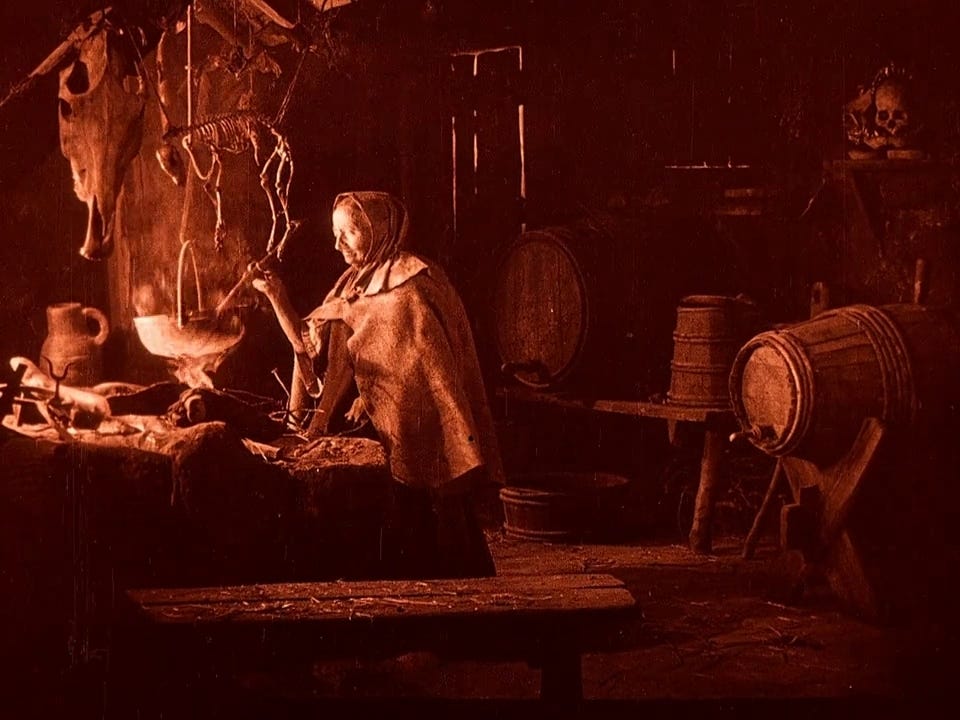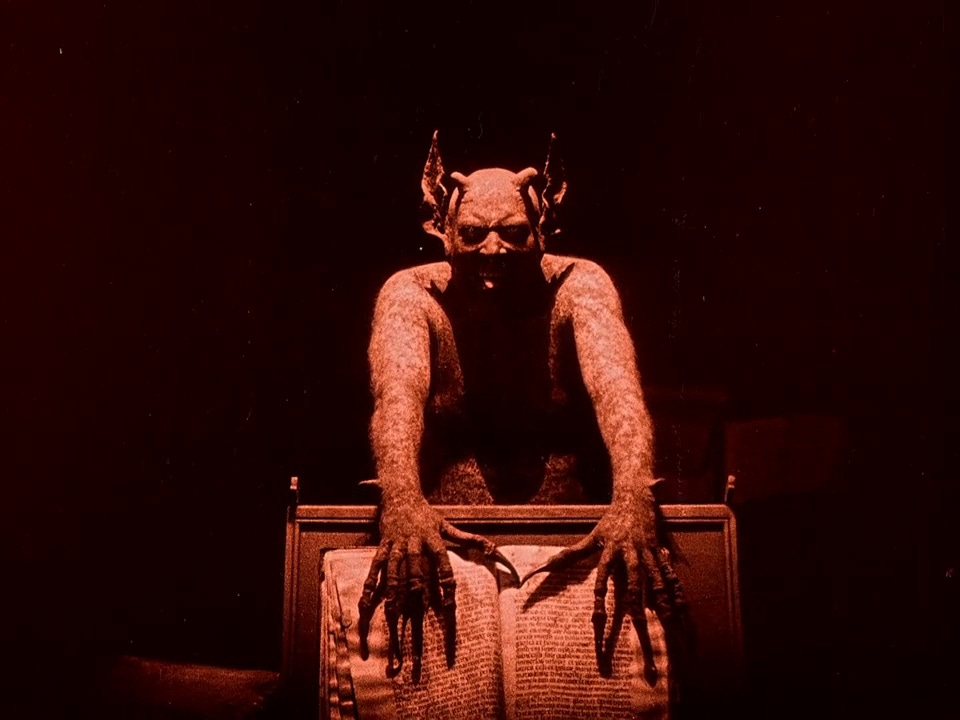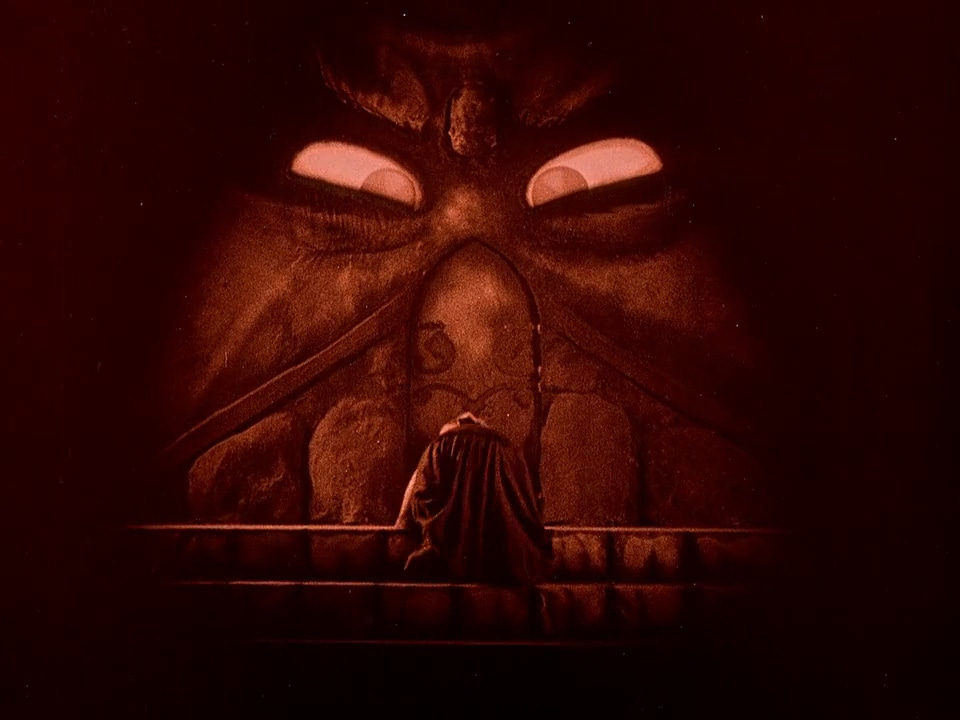Our dear friend Nosferatu turns 100-years-old this year. Due to his haunting design, Nosferatu has remained deep in the public consciousness. From his appearance in the legendary cartoon SpongeBob SquarePants to the still-in-development remake to be directed by Robert Eggers, we hear about Nosferatu a lot. So, it was no surprise when major publications released articles celebrating the seminal film’s 100th anniversary.
But another silent horror classic turns 100 years old this year, and one that is perhaps more interesting to look at 100 years later: Benjamin Christensen's Häxan.
In 1922, filmmaking was still young, but it certainly was established. The narrative structure was solidified and audiences went out to the theaters to see feature-length dramas and comedies. Nosferatu: A Symphony of Horror sticks to a traditional narrative structure, but Benjamin Christensen set out for something more undefinable. Häxan (re-named Witchcraft Through the Ages in a 1968 re-release) is many things throughout its runtime: a visual essay, a narrative film, and a docu-drama.
However, the film labels itself as “a cultural and historical presentation in moving pictures in seven parts.” From 1919 to 1921, Christensen studied witchcraft and witch-hunting, and instead of adapting a work of fiction about witchcraft he sought “to find the way forward to original films." In that regard, Christensen more than succeeds.
Häxan is one of the most original films I have ever seen, which is interesting considering—and I cannot reiterate this enough—the movie is 100-freaking-years-old. It is also one of the most consistently fun movies I’ve ever seen; it’s the kind of movie I want to start again the moment it ends. In terms of blending styles, it feels like Christensen was so ahead of his time that filmmakers are still trying to catch up to his originality.
The film starts as a lecture, equipped with a pointer to emphasize certain images to the viewer, and of course, the film is silent, so we read Christensen's argument via intertitles. Christensen shows portrayals of demons from ancient Egyptian cultures and the Middle Ages. Christensen's point is made early on: while the science of those ancient times has changed, our belief in evil spirits has not.
Häxan continues with dramatic re-creations of witches in 1488 making and distributing potions, including a love potion the buyer intends to use to seduce a monk. Here the movie is the most visually unhinged with stellar attention to mood through lighting, wonderfully bizarre costume design for demons and the Devil (who cannot seem to keep his tongue in his mouth), and meticulous portrayals of a sabbath including witches kissing the Devil’s ass as they arrive at the gathering.
The film then uses “the imagination”—as it puts it—to portray an unfair and unscientific witch trial, as they all were. Christensen includes a prelude to this section where he cites his sources, just to remind the viewer that he spent two years researching the topic. We also see the Devil infiltrate a monastery before the film’s end. Breaking back into the docu-drama style, Christensen highlights the torture devices used to force accused witches into a confession.
It is towards the end of the film where Christensen brings his thesis back around; it’s also what makes Häxan fascinating to watch 100 years later. Christensen makes the point that mass Medieval witch trials were due to a lack of understanding of hysteria– an outdated diagnosis given to women, that is now seen as a catch-all term for several issues ranging from anxiety to not wanting to get married.
As the film argues, a woman with hysteria in 1488 would be tried (and likely killed) on the accusation that she was a witch, but in modern times (1921), that woman would be sent to a clinic. Although he uses outdated terminology with hints of misogyny, Christensen doesn’t try to say that sending women to a clinic is a better substitute. In his opinion, a witch trial and a stay in the clinic are not too different. Both are inhumane ways of dealing with “sick” women.
But still, for as much time Häxan spends scoffing at the unscientific methods of the Medieval times, modern audiences can scoff at the movie for its emphasis on the “medical” concept of hysteria — which primarily runs the final 10 minutes of the movie. Christensen also gets impressively close to a 2022-proof point with lines such as “during the witchcraft era it was dangerous to be old and ugly, but it was not safe to be young and pretty either.”
The cruel joke perhaps is time never stops. Take an intertitle from the movie, in an early example of a fourth wall break in film, Christensen recalls an experience from filming the witch trial sequence: “The lovely old woman who plays the role of Maria the Weaver in my film once raised her tired face to me during a pause in the shoot and said: ‘The Devil is real. I have seen him sitting at my bedside.’ With the old woman’s permission, I show here a prayer book in which a woman (from 1921!) claims to know the Devil’s true form.” It is a surprise to Christensen that someone in 1921 could believe in the Devil. I like to imagine Christensen's face when someone from 2022 tells him that hysteria is no longer seen as legitimate and belief in the Devil is still widespread.
I guess we’ll never know Benjamin Christensen's reaction to how his assessment has aged, but what I do know is that 100 years later Häxan remains a golden example of what the horror genre, and filmmaking as a whole, is capable of.
RECOMMENDED MOVIES:
Häxan (1922, dir. Benjamin Christensen) Stream on HBO Max and Criterion Channel, Rent on Apple TV, Amazon Prime, and Vudu
Nosferatu: A Symphony of Horror (1922, dir. F.W. Muranu) Stream on AMC+, Kanopy, Shudder, and Plex, Rent on Apple TV, Amazon Prime, Vudu, Google Play, YouTube, and KinoNow
SOURCES:
Häxan (1922), dir. Benjamin Christensen
Christensen, Benjamin (5 August 1921). "From a published letter". Kinobladet 9 (17).








